
French postcard in the Collection Magie Noire by Éditions Hazan, Paris, 1990, no. 6231. Burt Lancaster and Ava Gardner in The Killers (Robert Siodmak, 1946).

German postcard by Ross Verlag, no. 6424/1, 1931-1932. Photo: Ufa. Emil Jannings in Stürme der Leidenschaft / The Tempest (Robert Siodmak, 1931).

German postcard by Ross Verlag, no. 5563/1, 1930-1931. Photo: Ufa. Heinz Rühmann and Lien Deyers in Der Mann, der seinen Mörder sucht / The Man in Search of His Murderer (Robert Siodmak, 1931).

German postcard by Agfa. Photo: Ufa. Hans Albers and Lilian Harvey in Quick (Robert Siodmak, 1932).

British postcard in the Picturegoer Series, no. D 79. Photo: Warner Bros. Burt Lancaster in The Crimson Pirate (Robert Siodmak, 1952).
A masterpiece and one of the most important examples of Neuen Sachlichkeit
Robert Siodmak was born in Dresden, in the German Empire, in 1900. He was born to German Jewish parents, the merchant Ignatz Siodmak and his wife, Rosa Philippine, née Blum. Ignatz Siodmak came from Silesia, emigrated to America and then settled in Germany as an American citizen in 1899, where he married. Robert's younger brother Kurt Siodmak (later Curt Siodmak) was also born there in 1902. Their mother died of cancer before her 40th birthday, and their youngest brother, Rolf, later committed suicide at the age of 20.
Siodmak attended grammar school in Dresden and took acting lessons with Erich Ponto. He broke with his father and joined a travelling theatre company in 1918. In 1921, he worked as an accountant at the Mattersdorf and Schermer banks in Dresden. In 1924, he founded the publishing house Robert Siodmak and briefly edited the magazine Das Magazin. At Nero-Film AG in Berlin, run by his uncle Heinrich Nebenzahl, he established himself as an editor and assistant director for films by Harry Piel and Kurt Bernhardt.
Siodmak worked at Nero for two years before he finally persuaded Nebenzal to finance his first silent feature. The script was written by his brother Kurt and two beginners who would later become famous, Billy Wilder (then Billie Wilder) and Fred Zinnemann. He co-directed it with Edgar G. Ulmer with a cast of non-professionals. The result, the semi-documentary Menschen am Sonntag / People on Sunday (1930) was a masterpiece and one of the most important examples of Neue Sachlichkeit (New Objectivity) in German cinema.
Siodmak received a contract with Ufa, for which he directed film dramas, crime films and film comedies with famous stars. His first Ufa film was the sound comedy Abschied / Farewell (1930), written by Emeric Pressburger and Irma von Cube and starring Brigitte Horney. It was followed by a quite different and unusual comedy, Der Mann, der seinen Mörder sucht / The Man in Search of His Murderer (1931), written by Billy Wilder and starring Heinz Rühmann. In his next film, the crime thriller Stürme der Leidenschaft / Storms of Passion (1932), with Emil Jannings and Anna Sten, Siodmak found a style that would become his own. It is regarded as a precursor of Film Noir. He left the Ufa in 1932 when he was passed over because of his Jewish roots for F.P.1 antwortet nicht, a film adaptation of Kurt Siodmak's novel. He then directed Brennendes Geheimnis / Burning Secret (1933), a screen version of Stefan Zweig's novel. The film was banned after the National Socialists seized power. Joseph Goebbels' recently established Reich Ministry for Popular Enlightenment and Propaganda suspected allusions to the Reichstag fire of 27 February 1933.
Siodmak fled Germany and went to France. In Paris, he worked for the Néro-Films of his cousin Seymour Nebenzahl, who, like Siodmak, had been forced to emigrate. His creativity flourished as he worked for the next six years in a variety of film genres. He made comedies and musicals like Le Sexe faible / The Weaker Sex (1933) starring Mireille Balin, La crise est finie / The Crisis is Over (1934) with Albert Préjean and Danielle Darrieux, and La Vie parisienne / Parisian Life (1936) starring Max Dearly and Conchita Montenegro. The thriller Pièges / Personal Column (1939), starring Maurice Chevalier, Marie Déa and Erich von Stroheim, was Siodmak’s greatest public success of this creative period. His plan to film Ödön von Horváth's novel ‘Jugend ohne Gott’ failed due to the author's sudden death in an accident.
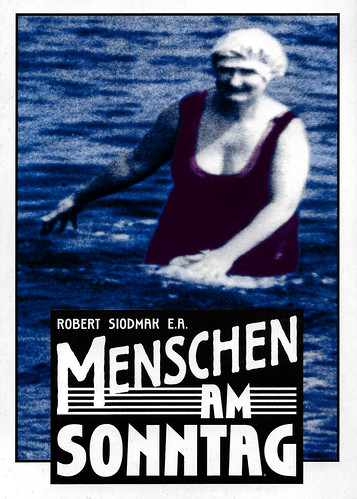
Dutch postcard by Filmmuseum, Amsterdam. Photo: Filmmuseum. Poster for Menschen am Sonntag / People on Sunday (Robert Siodmak, Edgar G. Ulmer, 1930).
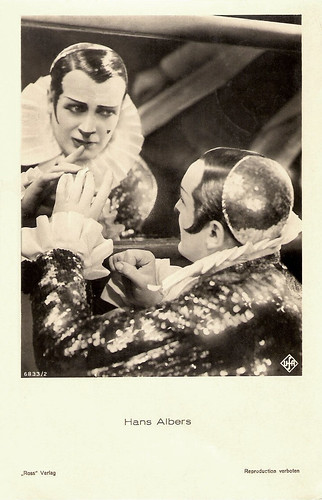
German postcard by Ross Verlag, no. 6833/2, 1931-1932. Photo: Ufa. Hans Albers in Quick (Robert Siodmak, 1932).

German postcard by Ross Verlag, no. 141/5, 1931-1932. Photo: Ufa. Hans Albers, Paul Hörbiger, Paul Westermeier and Genia Nikolaieva in Quick (Robert Siodmak, 1931).

German postcard. Photo: IFA. Marie Déa and Maurice Chevalier in Pièges / Personal Column (Robert Siodmak, 1939).

Spanish postcard. Ella Raines and George Sanders in The Strange Affair of Uncle Henry (Robert Siodmak, 1945). Collection: Marlene Pilaete.
Blending German expressionism and French existentialism with American angst
When the Second World War started, Robert Siodmak had to flee the Nazis again, and he arrived in California in 1939. His first American film was the comedy West Point Widow (1941) with Anne Shirley. He initially produced several B-films and programmers for Paramount Pictures, 20th Century Fox and Republic Pictures. Siodmak later called these films “mere bread-and-butter work”.
In 1943, he signed a seven-year contract with Universal Studios, and his first Universal production was Dracula's Son (1943), based on his brother Curt Siodmak's original story. Siodmak drew an uncharacteristically controlled and coldly menacing performance from Lon Chaney Jr. for the film. It was Universal's best-performing film in either the Horror or Science Fiction genres during this period. His second feature was the Maria Montez Camp classic, Cobra Woman (1944), made in Technicolour.
His first Film Noir was Phantom Lady (1944), for producer Joan Harrison, Universal's first female executive and Alfred Hitchcock's former secretary and script assistant. In Phantom Lady (1944), Alan Curtis stalks the streets and bars in search of a mysterious lady, played by Ella Raines. In a few years, Siodmak developed into a formidable director of suspense and crime films. In The Spiral Staircase (1945), mute Dorothy McGuire and widowed invalid Ethel Barrymore are stalked by a serial killer of women with physical handicaps. The film was a box-office success, praised for its cinematography, atmosphere, and suspense, and Barrymore received an Oscar nomination.
In The Killers (1946), a boxer, Burt Lancaster in his film debut, stoically awaits the arrival of his killers in the deep shadows of his room. The film was a great commercial and critical success and launched Lancaster and his co-star, Ava Gardner, to stardom. Siodmak was influenced by the German schools of expressionism and realism of the 1920s. Film Noir gave him the opportunity to use his pictorial sense and his narrative skills. His string of atmospheric thrillers also included The Suspect (1944), Christmas Holiday (1944), The Strange Affair of Uncle Harry (1945), The Dark Mirror (1946), Cry of the City (1948) and Criss Cross (1949).
David Parkinson at BFI: “Siodmak didn’t patent the noir formula, but he showed how to blend German expressionism and French existentialism with American angst and, in the process, he directed more canonical landmarks than anyone else in the new genre’s heyday. Dismayed by the world around him, Siodmak examined societal injustice, domestic turmoil, gender conflict, sexual repression, psychological trauma and the rise of the career criminal.” Siodmak’s Film Noir series ended with The File on Thelma Jordon (1950) with Barbara Stanwyck. Siodmak turned down a new seven-year contract offer from Universal. In 1952, he made the amusing Swashbuckler The Crimson Pirate (1952), his last American film before leaving his adopted country. The shooting was characterised by ongoing disputes between him and Burt Lancaster, who had become a star since The Killers (1946). Siodmak preferred the old Hollywood studio system, which was dying out at the end of the 1940s, to the new studio conditions, in which, in his words, ‘anarchy’ prevailed and ‘egomaniacal’ stars were in charge.

French postcard by Editions Humour à la carte, Paris. Belgian poster for the film The Killers (Robert Siodmak, 1946), starring Burt Lancaster and Ava Gardner.
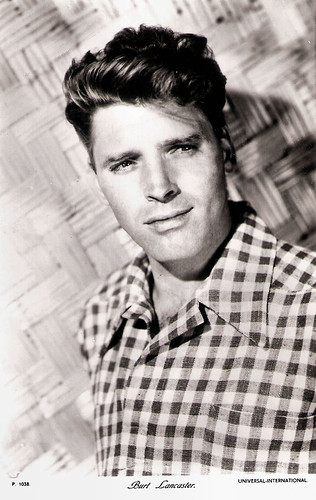
British postcard in The People series by Show Parade Picture Service, London, no. P. 1038. Photo: Universal International. Burt Lancaster in Criss Cross (Robert Siodmak, 1949).

Belgian collector card by Kwatta, Bois-d'Haine, no. C. 245. Photo: MGM. Gregory Peck in The Great Sinner (Robert Siodmak, 1949).
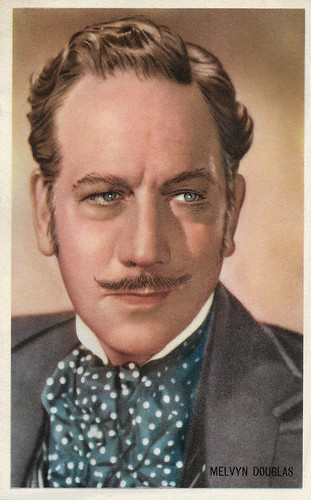
Belgian collector card by Kwatta, Bois d'Haine, no. C. 270. Photo: MGM. Melvyn Douglas in The Great Sinner (Robert Siodmak, 1949).

French postcard by Ecole et Cinema. Burt Lancaster in The Crimson Pirate (Robert Siodmak, 1952).

French postcard by Editions Zreik, Paris,i n collection Télérama, la mémoire du cinéma. Belgian poster for the film The Crimson Pirate (Robert Siodmak, 1952), starring Burt Lancaster.
Films critical of his homeland, during and after Hitler
Robert Siodmak returned to Europe. A further reason for his departure from Hollywood was that he was targeted by the House Committee on Un-American Activities (HUAC), which in the 1940s and 1950s scrutinised filmmakers for their political views. Siodmak is said to have rewritten the screenplay of The Crimson Pirate, originally written by Waldo Salt, as a comedy within two days. Salt was accused of being a communist eight days before the shooting began, and his screenplay was therefore not allowed to be filmed. Siodmak settled in Ascona on the Swiss shore of Lake Maggiore.
In France, he directed Gina Lollobrigida in the drama Le Grand Jeu / Flesh and the Woman (1954), which was entered into the 1954 Cannes Film Festival. The next year, he returned to West Germany to make Die Ratten / The Rats (1955), with Maria Schell and Curd Jurgens. The film, an adaptation of Gerhart Hauptmann's play of the same name, won the Golden Berlin Bear at the 1955 Berlin Film Festival. It was the first in a series of films critical of his homeland during and after Hitler.
His production Nachts, wenn der Teufel kam / The Devil Strikes at Night (1957) was based on the story of Bruno Lüdke (played by Mario Adorf), who was falsely accused of being a serial killer by the Nazis. The film was nominated for Best Foreign Language Film. In his autobiography, Siodmak noted that of the films he made after returning from the USA, he was only proud of these two. In the 1950s and 1960s, he worked in such diverse fields as crime films, film dramas, Westerns and historical films, and most of these films were profitable at the box office, if not always successful with the critics.
Mein Schulfreund / My Schoolfriend (1960) with Heinz Rühmann and L'affaire Nina B. / Affäre Nina B. / The Nina B. Affair (1961) with Pierre Brasseur and Nadja Tiller had National Socialism as their thematic background. Siodmak directed three Karl May film adaptations with Lex Barker: Der Schut / The Shoot (1964), Der Schatz der Azteken / The Treasure of the Aztecs (1965) and the sequel Die Pyramide des Sonnengottes / The Pyramid of the Sun God (1965). In Spain, Siodmak shot the epic Western Custer of the West (1967) for American producer Philip Yordan. It presents a highly fictionalised version of the life and death of George Armstrong Custer, starring Robert Shaw as Custer. The film was a disappointment, receiving mostly negative reviews from critics and failing to generate box-office appeal.
For German producer Artur Brauner, Siodmak directed the two-part monumental film Kampf um Rom/ Battle for Rome (1968-1969), starring Laurence Harvey and Orson Welles. It was his last film and another disappointment. He made a brief appearance in Thomas Schamoni's thriller Ein großer graublauer Vogel / A Great Grey-Blue Bird (1970). His wife Bertha, whom he had married in Paris in 1933, died in 1973. Two months later, Robert Siodmak succumbed to a heart attack in Locarno, Switzerland. He was 72. In 1998, the Berlin International Film Festival dedicated a retrospective to the Siodmak brothers, which was attended by Curt Siodmak, who died two years later.
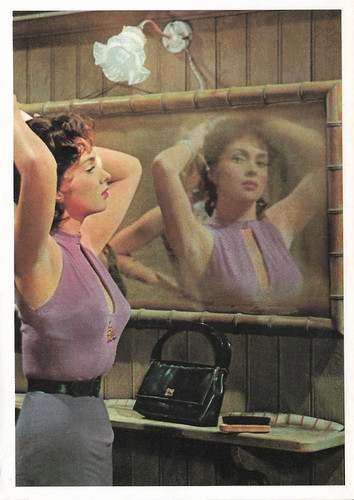
French postcard in the collection Cinéma Couleur by Editions La Malibran, Nancy, no. MC 37, 1990. Photo: Gina Lollobrigida in Le grand jeu / Card of Fate (Robert Siodmak, 1954).

German postcard by Kunst und Bild, Berlin, no. I 409. Photo: CCC-Film / Herzog-Film / A. Grimm. Curd Jürgens in Die Ratten / The Rats (Robert Siodmak, 1955).

German postcard by Kolibri-Verlag G.m.b.H., Minden/Westf., no. 996. Photo: Speva / Gloria-Film. Curd Jürgens in Katia / Adorable Sinner (Robert Siodmak, 1959).

German postcard by ISV, no. 4. Curd Jürgens and Romy Schneider in Katia / Adorable Sinner (Robert Siodmak, 1959).
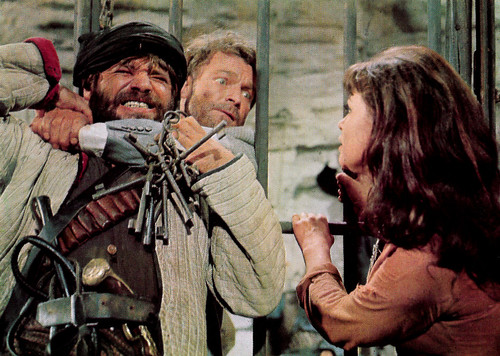
West-German postcard by Heinerle Karl-May-Postkarten, no. 25. Photo: CCC / Gloria-Verleih. Pierre Fromont and Marie Versini in Der Schut / The Shoot (Robert Siodmak, 1964). Caption: "Monsieur Galingré - for God's sake, what are you doing!" - "Don't mind me! Get out of here as fast as you can, or you'll be lost!" - "You'll pay for this, Frenchman, you scoundrel!"

German postcard by Heinerle Karl-May-Postkarten, no. 40. Photo: CCC / Gloria. Lex Barker and Ralf Wolter in Der Schut / The Shoot (Robert Siodmak, 1964). Caption: Kara, who suddenly missed his faithful servant, has followed in his footsteps and could free him in time from the clutches of the bandits. Kara now takes each bandit on the grain with his dreaded bear hunter.
Sources: David Parkinson (BFI), They Shoot Pictures, Don’t They, Wikipedia (Dutch, German and French) and IMDb.
No comments:
Post a Comment